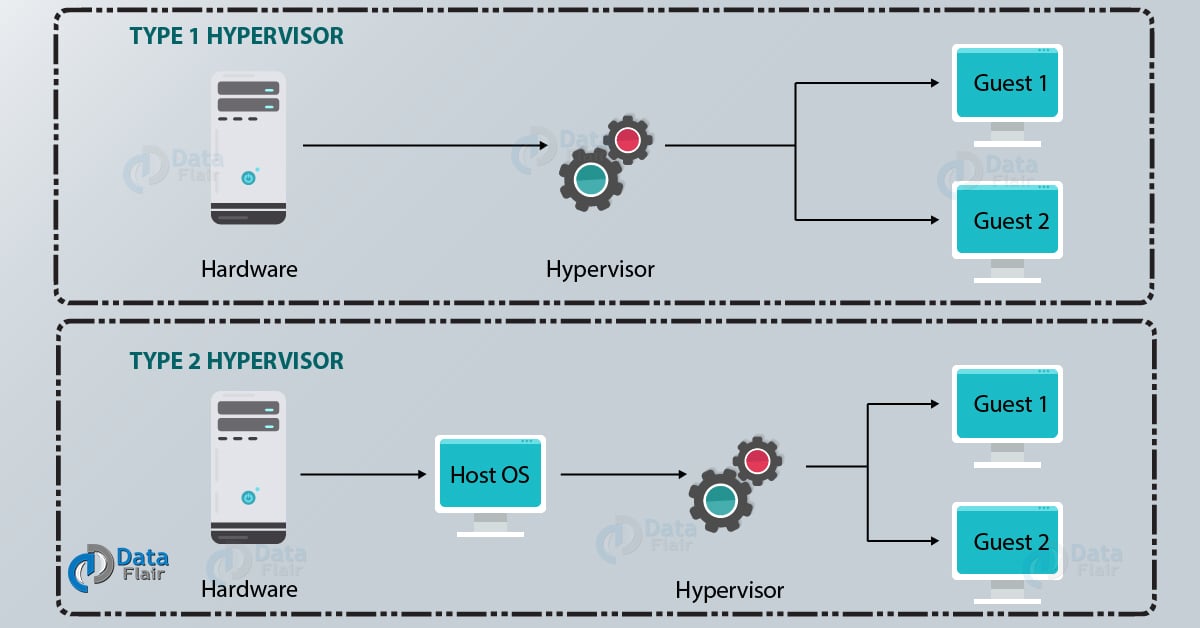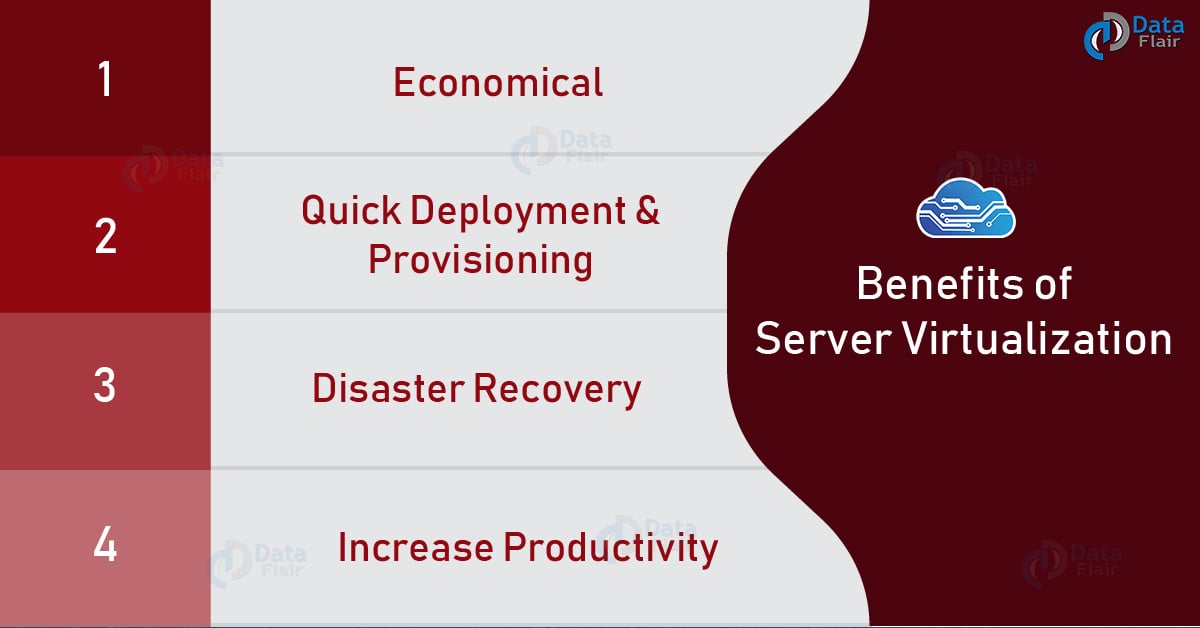Working of Server Virtualization in Cloud Computing | Types & Benefits
Free AWS Course for AWS Certified Cloud Practitioner (CLF-C01) Start Now!!
In our last tutorial, we discussed Software Virtualization. Here, we will learn about Server Virtualization in Cloud Computing. In which we will discuss, working, benefits and types of Server Virtualization. Along with this, we will cover different types of hypervisor and virtual server usage.
What is Server Virtualization in Cloud Computing?
Server virtualization is a partition of physical servers into multiple virtual servers. Here, each virtual server is running its own operating system and applications. It can be said that server virtualization in cloud computing is the masking of server resources.
The server is familiar with the identity of individual physical servers. The single physical server is divided into multiple isolated virtual servers, with the help of software.
Today, the companies contain a large number of servers but don’t use them. This results as, the waste of expensive servers.
We can use server virtualization in IT infrastructure, this can reduce cost by increasing the utilization of existing servers. Server virtualization generally benefits from small to medium scale applications.
Types of Server Virtualization
There are 3 types of server virtualization in cloud computing:
i. Hypervisor
A Hypervisor is a layer between the operating system and hardware. The hypervisor is the reason behind the successful running of multiple operating systems.
It can also perform tasks such as handling queues, dispatching and returning the hardware request. Host operating system works on the top of the hypervisor, we use it to administer and manage the virtual machines.
ii. Para-Virtualization
In Para-virtualization model, simulation in trapping overhead in software virtualizations. It is based on the hypervisor and the guest operating system and modified entry compiled for installing it in a virtual machine.
After the modification, the overall performance is increased as the guest operating system communicates directly with the hypervisor.
iii. Full Virtualization
Full virtualizations can emulate the underlying hardware. It is quite similar to Para-virtualization. Here, machine operation used by the operating system which is further used to perform input-output or modify the system status.
The unmodified operating system can run on the top of the hypervisor. This is possible because of the operations, which are emulated in the software and the status codes are returned with what the real hardware would deliver.
Types of Hypervisor
The hypervisor uses to enable server virtualization in Cloud Computing. There are two types of hypervisor such as-
i. Bare Metal Hypervisor
The Bare-metal hypervisor is installed directly on the top of the host hardware. It manages all the hardware resources which are installed inside the tin. The hardware resource is further allocated to the virtual machine. VMware vSphere ESXi is an example of the bare metal hypervisor.
ii. Type-2
The second type of hypervisor runs directly on the top of the conventional operating system. Type 2 hypervisor has some architecture limitation. They are quite popular in a nonproduction environment and VMware Workstation for VirtualBox is the example of type-2.
How Server Virtualization Works?
Lucid is the basic principle of working of the server virtualization. Each virtual server performs like a unique physical device, which is capable to run its own operating system. Here software which is specially designed for this purpose is used.
An administrator which is present in the software can convert one physical server into multiple servers. So these multiple servers are enough to use all the machines processing power.
CPU works with multiple processors that provides the ability to run several complicated tasks with ease. Here, the virtual server specially dedicates only to a particular task to perform better. There are many servers which use only a small part of their overall capability.
However, another problem which arises is that the larger the computer network the more complex a server will be.
Virtual Server Usage
We can use the virtual server for web service as web hosting services to the customers at very low cost. In web hosting, there is no need for a separate computer as a single web server provides an ample amount of virtual servers which are sufficient enough to handle the whole work.
Why Server Virtualization?
Server Virtualization allows us to use resources efficiently. With the help of server virtualization, you can eliminate the major cost of hardware. This virtualization in Cloud Computing can divide the workload to the multiple servers and all these virtual servers are capable of performing a dedicated task.
One of the reasons for choosing server virtualization is that a person can move the workload between virtual machine according to the load.
Server virtualization helps to address issues at a time. This is done with the help of specially designed software, an administrator which can convert a single physical server into virtual machines.
The single virtual server acts like an independent physical device which can manage and operate its own operating system. Earlier the scientists created virtual machines on supercomputers for decades and now it is an interesting topic.
Server Virtualization Benefits
Let’s discuss some advantages of Server Virtualization in Cloud Computing:
i. Economical
This is one of the major benefits of server virtualization because it can divide a single server into multiple virtual servers which eliminate the cost of physical hardware. Moreover, the applications are no longer in need of their own server as each virtual machine on the server operates them.
ii. Quick Deployment and Provisioning
Within minutes, you can perform the provisioning and deployment process. Here, Server Virtualization allows replicating an existing virtual machine.
iii. Disaster Recovery
A data virtually move from one server to another, quickly and safely. You can store the data anywhere and retrieved from anywhere, this process consumes less time and downtime will be very less.
iv. Increase Productivity
If the physical servers are less in amount then it will be easy for them to maintain. In addition, there are many tools available for making provision and convert services as efficiently as possible.
So, this was all about Server Virtualization in Cloud Computing. Hope you liked our explanation.
Conclusion
Server virtualization in cloud computing is helping a lot to the IT industries as each virtual server run its own operating system and is capable to perform complicated tasks. It saves the cost, which can be used in other works. Furthermore, if you have any queries, feel free to ask in the comment section.
Your 15 seconds will encourage us to work even harder
Please share your happy experience on Google





